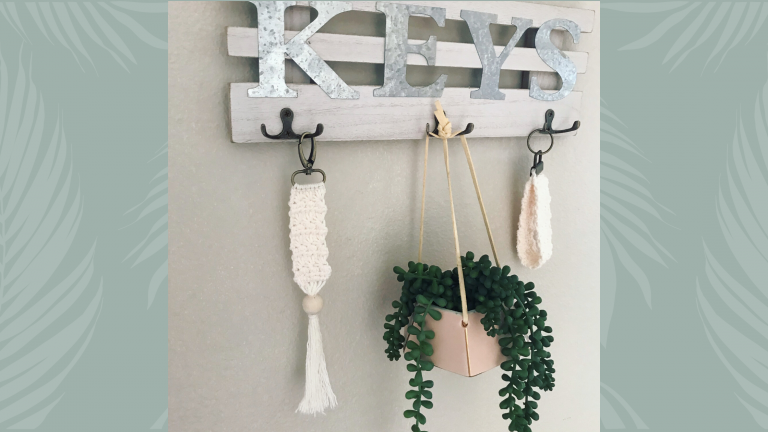Crochet a Mountain Blanket Square
Recently I was asked to join in with a group of crochet designers to create a blanket square for a winter themed crochet-a-long. The Winter Wonder Squares CAL has 17 different designers contributing a free square pattern about what things that are significant to them at winter time. I love winter, and since today is my birthday (yay! Happy Birthday me!), I decided today would be a perfect day to host a square design.
My Inspiration
So winter time in Washington state can be pretty snowy or pretty mild. On my side of the state, we usually see a few inches of snow here and there, but mostly just cold days and morning frosts. One thing we do see a lot of is Mount Rainier.
Mount Rainier is actually an active volcano and the tallest mountain in Washington state. It’s also pretty stunning in the winter with its extra layers of snow. So I decided to design my square based on this massive beauty.

The Yarn
This square, along with the others in the CAL, is designed with worsted weight yarn in mind. When I made mine, I used a navy blue for the foreground, a white for the snowy mountain, and a variegated yarn to give the sky a sunset effect. If you wanted to skip the variegated yarn, I think a light blue would be a great substitution for the sky.
Special Stitches & Techniques
To complete this square, you will only need to know two stitches: chain and single crochet. However, there are some special techniques involved to do your color changes. If you’re already familiar with colorwork, you’re good to go!
Reading a Graph
So first off, you will be working from a graph for this pattern. So you will need to know how to read a graph. Each little square on the graph counts as one single crochet stitch. So you will start in the bottom right hand corner (Row 1, Column 1). You will work across the row changing colors whenever the graph square is a different color. You will continue until you reach the end of that row. At the end of the row, you will chain 1 and turn. Then in the following row, starting on the left hand side, you will work your way back across the next row following color changes as they occur. Since this piece is worked flat, you will continue working back and forth across the graph until you finish it.
Changing Colors
You will also need to know how to change colors in this square. Color work in crochet can look intimidating but it’s really pretty easy. Here’s what you do… With your first color, insert hook in to the stitch before the color change, and pull up a loop. Then you will yarn over with the new color and pull the new color through the two loops on your hook.
Carrying Yarn
For this square, I carried my yarn along color change rows using a tapestry crochet technique. The down side of doing color work this way is that you can see a bit of the unused yarn color peeking through. However, the up side is that there are less ends to weave at the end. I’m always a fan of less ends with a big project.
To carry your yarn, you hold the unused strand along the back of your work, and work your stitches around it as you go. I like to pick a side that is “the back” and make sure to hold my unused yarn on that side as I work. That requires pulling my yarn across the stitch after a color change so that it is being held in the front of my work, when working on the wrong side. When turning at the end of the row, loop the carried around the edge and continue carrying across the row.
Intarsia
Intarsia crochet is another way to approach color work. With this technique, you often use bobbins to keep your yarn tidy. Whenever there is a color change, you start a new bobbin with the new color and leave the previous color attached where the color stops. When you get back to that color section on the return pass, you pick up the bobbin that you left there. This technique is nice because you don’t have to worry about carrying yarn, and you don’t see another color peeking through your stitches. However, there are more ends to weave in and you can end up with a lot of bobbins if there are a lot of color changes.
There are a couple areas of this square that you could get away with using intarsia techniques to the edges and then carry yarn with tapestry techniques in the center.
Final Thoughts
I hope you have fun with this square. Be sure to keep an eye on your tension as you work. Tight tension in tapestry can cause your work to pucker a bit. I like to give my stuff a gentle tug at the end of each row to make sure everything is stretching like its supposed to. If you’re unsure about some of these techniques, do a Youtube some of the terms I mentioned. You’re bound to get a plethora of helpful videos.
Also, be sure to block your square when you’re finished to get nice straight edges to join! I’ll be adding another square to this CAL on December 18, so make sure to come back and check it out!
Until then, Happy Crafting!
Kelsie

Materials Needed
- 3 colors of worsted weight yarn (approx. 20 yds of each)
- Size I (5.5mm) crochet hook
- Tapestry needle
- Scissors
Gauge
14 Sc x 16 Rows = 4″ Square
Pattern
Row 1: Ch 29. Sc in second chain from hook and in each chain across. (28)
Row 2-30: Ch 1 and turn. Sc in each stitch across following color changes directed by chart.
Tie off and weave in ends. Block your piece.
Graph

For this entire week, you can download the free PDF for the pattern from my Ravelry shop! Use code MTRAINIER at checkout. Check it out here!
UPDATE: I have extended the coupon code until December 25, 2019. So if you’re playing catch-up, go to Ravelry and grab that PDF! (Note: if you’ve purchased the square, feel to send me a message.)









Thank you & have a very Happy Birthday!!
What a nice square! Thank you for sharing your talents!
Happy Birthday! Thank you for a beautiful square and very helpful tips. Amanda